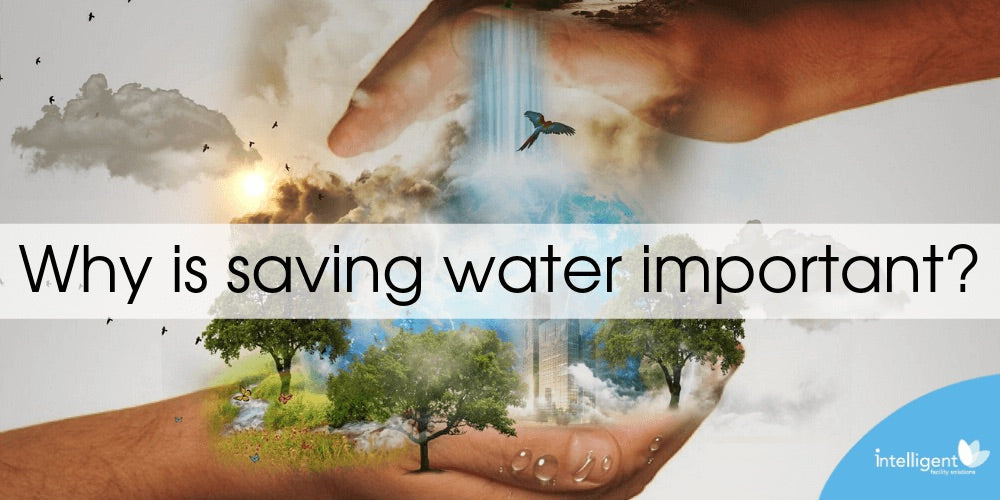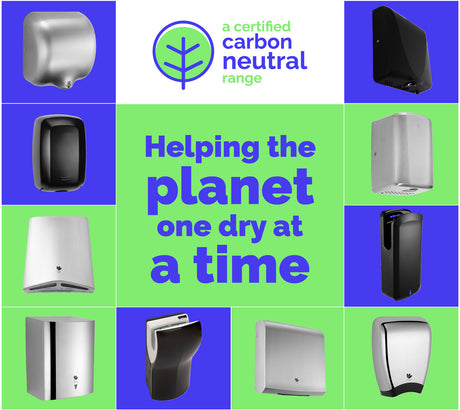
Water is all around us isn’t it? Rivers, lakes, the sea you swam in on holiday or live near to. There seems to be an endless supply. So why do people keep telling us we need to save as much as possible?
After reading this, do make sure to check out the free water saving devices available in the UK, that will really help in the conservation of water. We’ve pulled all the resources together in one place, so you don’t have to spend time trawling through the internet!
You’re certainly not on your own if you think this. According to SES Water, 1 in 4 people admit to taking water availability for granted, with no idea how much water they use daily . 67% feel they can’t use less water than they already do. However, a study by the Water Regulation Advisory Scheme (WRAS), reported by WWT , found that people in the UK underestimate how much water they actually use by 55%. An average household uses 350 litres of water a day yet people estimate they only use 157 litres a day.
The problem is we do take things for granted. To be totally honest I didn’t realise the exact extent of this issue until I started researching everything below. I was 1 of the 4. If you have been thinking about saving water but not sure why you should be then this post is for you. It certainly opened my eyes to the nature of the issue we are facing. The information has also led me to look at my own habits when using water. I now know why there are so many campaigns and people telling us to save water and you will too.
It will answer the questions like:
- Will water actually run out?
- Why isn’t there enough water for everybody?
- How will saving water help me?
- Why is it important to save water anyway?
- What are water companies and government actually doing to save water or are they just relying on us?
For a summary of this article please see the blog post Why is water conservation in the UK important?
This post will provide a detailed account of why you need to be taking action now rather then later to cut back the amount of water you waste. It will give you the real reasons so that you can truly understand the scale of the crisis we could be facing.
Hopefully it will give you a new perspective, just like it did me. I now realise that this is not just a “nice to have” campaign being flaunted, it is quite a real problem.
Read on, I will explain more.
We all know that water is an essential part of life. We need it daily to live and perform vital functions in the body. Plants need water to grow and in turn, we get to eat the plant direct or the organism which ate the plant. It really is an extremely important substance.
The earth is made mostly of water, approximately 71%. This water is constantly being recycled in a closed loop, water cycle system, therefore being a finite source. Being moved from the atmosphere, to the earth and back again in a constant rotation. The amount of water on Earth will always remain the same, we don’t lose it and we don’t create more. This has happened for billions of years and apparently it is realistic that the water you washed with this morning has at one time come into contact with a tyrannosaurus rex!
In the UK it seems very unlikely that we wouldn’t have water available to us, doesn’t it? It’s always there when we turn on the tap or flush the toilet so why would we need to think about it not ever being there when we want it?
Well, the fact is that less than 1% of the earths water is usable to us ! The rest of the water is stored in the sea, frozen in icecaps and floating around in the atmosphere. Out of the low percentage of freshwater available for human use, a massive 70% goes toward growing food and raising animals. Therefore, there is only a limited amount of freshwater available for other purposes.
What about the vast seas and oceans?
Sea water can’t be used directly to provide drinking water as its salt content is too high and the processes to remove the salt come at a huge financial cost. There is also a large energy requirement and environmental impact of the desalination of sea water. The heat from the sun naturally does this in the water cycle , turning the sea water into gas through evaporation and leaving behind the salt.
From an environmental point of view, by looking to use sea water you would be taking a natural habitat away from the world’s marine creatures and organisms. The occasional use of sea water is of course an option that gets looked at, but would the negatives of such a large-scale operation outweigh the positives?
But it’s always raining in the UK, how can there be a problem?
It doesn’t rain as much as you may think when compared to some places around the world which may surprise you.
SES water suggest that “London receives less rainfall then cities such as Rome, Miami, Sydney and Barcelona. If you divide the rainfall per person, we have less than Morocco and Turkey. South-east England receives 50% less rainfall than the rest of the UK.”

Image courtesy of SES water https://www.waterplc.com/pages/savingwater/EDC-HowTo/
Image courtesy of SES water https://www.waterplc.com/pages/savingwater/EDC-HowTo/
Key point: Although there is a vast amount of water on earth, and this never changes in volume, there is only a certain amount of usable water available at a certain point in time. It all depends where in the water cycle it is.
What issues are there going to be with water availability?
When rain falls, nearly 50% goes back to the atmosphere through evaporation or gets used by plants. A process known as evapotranspiration. The rest (effective rainfall) is available in surface water or ground water.
The problem is that the availability of the water is dependent on where it is in the water cycle. Just because it was drinking water one minute, does not mean that it will get back to that stage for a very, very long time. The water cycle does not occur at a pace which will be able to cope with the demands that will be placed over it in the coming years.
Ground water makes up about 30% of England’s drinking water supply, in 2017 abstraction in around 28% of groundwater bodies were not at a sustainable level ( Environmental Agency )
Climate change
We’ve heard or read about it in the news . Climate change is at critical levels. We’ve noticed the changes in weather ourselves over the years. We’re getting dryer summers which can lead to droughts. There are also wetter winters that bring about the potential for flooding.
The hotter summers means a greater amount of evaporation of water back into the atmosphere. That means there is less on the ground for abstraction when it is required, especially in times of drought.
Flooding due to increases in sudden heavy downpours, where lakes, rivers and reservoirs cannot cope and burst their banks, means that essential water is lost, a supply that was available is lost, and it causes structural and environmental damage.
The irregularity of rainfall makes it very difficult to plan for water availability. A sudden drought or heatwave and the need for water goes up dramatically. This is predicted to happen more and more with climate change. There is also a case for consumers taking action now so that money is not wasted on putting in infrastructure which may not be needed if predicted changes in temperature etc. are more favourable than that which are predicted.
Tree planting is a vital step in combating climate change however if more trees are to be planted in the UK then they will also place an increased demand on already limited available water to survive.
Population growth
The population is growing, and with a growing population comes more demand on resources. The Office for National Statistics states:
“The UK population is projected to increase from an estimated 65.6 million in mid-2016 to 69.2 million in mid-2026.”
“The UK population is projected to pass 70 million by mid-2029 and be 72.9 million in mid-2041.”
As you will read below the rates of abstraction of water are already at levels which are not sustainable. A growing population, demanding more water in an instant, will only worsen this.
Energy generation
Creating energy is a major use of water. Not only this, if we use more water than needed (i.e. we waste water) there is a need for heating water that isn’t required. This not only costs in bills, but creates more carbon to produce the energy to heat the water. The increasing population means an increase in energy demands. This can be offset by using more eco-friendly methods of energy production, but again is not a quick fix option.
Changes in land, rivers and wetlands use
All these new people on the earth are going to need to live and work somewhere. Therefore, ground that was available to abstract water from is being replaced by bricks, mortar and tarmac.
Water in our lakes, wetlands and water courses protects the environment. This means that increasing the abstraction of water would have a negative effect. In a report from the Department for Environment Food and Rural Affairs (DEFRA) it quotes that The Water Industry National Environmental Programme suggests that to help the environment it is estimated that over 700 Ml per day less water is abstracted.
Leaks and losses of water
3 billion litres of water was reported in 2017 to be lost each day through leaks . Water companies are looking into this more and more and getting results. The economic regulator of the water sector in England and Wales, Ofwat, state that if companies do not meet their leakage targets they can take action against them.
It is fair to say that when you read this, you may be less likely to save water, thinking it’s their problem not yours. However, this needs to be a dual action approach as there are still significantly large amounts of water wasted at the consumer end that can be avoided. Fixing a leak can take a while due to planning work to be carried out and redirecting water so that supply is not affected. It isn’t a quick fix solution.
We know that leaked water will eventually return to the water cycle, but it adds to abstraction pressures and wastes the energy used in pumping, treating and cleaning it again. It is also important to note that it is impossible to eliminate leaks completely. Like most other things, over time pipes are prone to wearing out and suffer damage from the external environment. For example, from ground movement, freezing temperatures or very dry weather and the impact of traffic on the roads.

The extent of the problem
Key point: the demand for water is outweighing the ability to supply at the rates it’s being demanded and this is only going to get worse if things don’t change. The demand needs to slow down by not wasting what’s available at a given point in time.
So why is there now an issue when there hasn’t been in the past? Well as stated, we are now at a level where the available freshwater can’t be turned around quick enough for the increasing demands. The infrastructure and processes of getting water are at unsustainable levels. A report from Water UK states that there could be a significant deficit in water availability by the 2040’s (Just over 20 years from the time of writing).
Sir James Bevan, chief executive of the Environment Agency has been quoted by the BBC as saying :
“in around 20 to 25 years, England would reach the “jaws of death – the point at which, unless we take action to change things, we will not have enough water to supply our needs”
In 2018, the Environmental Agency stated that If we do not increase water supply, reduce demand and cut down on waste there may be serious water shortages by 2050 . This includes not enough water for people, businesses, farmers, wildlife and the environment.
There is a 25% chance that over the next 30 years a large number of households and businesses will have their water supply cut off because of a severe drought.
There are already areas in England which are classed as being seriously water stressed so placing further pressure on these areas could prove disastrous. The areas classed as being at a “serious level of water stress” include the east, south east and south of England .
Affinity Water who cover one of the water stressed areas state that:
- By 2080, in their area, it is predicted that climate change will reduce their supply of water by 39 million litres a day.
- Due to population increases, there will be approximately 1.8 million more people in their supply area by 2080, putting further strain on their resources.
- Between July 2016 and April 2017 the area received 33% less rainfall than the national average. However, their customers in the South East use more water daily – 152 litres per person per day, which is higher than the national average of 140 litres per person per day
According to the Environment Agency, in 2016 almost 9500 billion litres of fresh water was abstracted , enough to cover greater London in nearly 6m of water (height of a 2 story house!)
At the present time there are very few places across England where additional water is available as the current levels of abstraction are at the same point as demands. Therefore, any increased demands will place very high stress on our already unsustainable levels.
Yes waste water is returned during the water cycle because, as stated above, water is not gained or lost, it is constantly recycled and has been since before prehistoric times. However, the problem is that the water returning can be a long way from where it can be abstracted again. There is also the increased cost of time and energy required to make the water safe again, a process the water has been through already. The waste may also return straight to the sea, making it unusable pretty much straightaway.
Waterwise highlights that the water industry produces 1% of total UK greenhouse gas emissions, whilst SES water states treating water and getting it your tap takes a lot of energy and it produces 5% of the UK’s total greenhouse gas emissions. Differences could be due to the date of publications. However, reducing the amount of water waste which needs to be retreated, can help the planet battle climate change.
What needs to happen for better water conservation?
“Being water-efficient is using the appropriate amount of water required to carry out a specific task” – Water Efficiency Strategy for the UK
It is recommended that water companies can make implementation of water metres compulsory by 2030’s as this gives an idea of how much water is being used at consumer level.
DEFRA suggest it’s estimated that if leakage was reduced by 50% and people decreased their consumption to 100 litres per day there would be enough water for more than an additional 20 million people by 2050. The current average per person per day is 140 litres in England, 150 litres a day in Scotland and 145 litres a day in Northern Ireland ( Waterwise ).
Water companies are striving to achieve this target and showing progress.
What are water companies doing?
Of course, infrastructure needs to be looked at and improved regarding how companies collect, treat and distribute enough water. As stated, there is also the issue of leaks.
Including educational programmes and giving away free water saving devices, these are examples of what water companies are currently doing on their side of things:
Affinity Water – They send out more than 100 people finding and fixing leaks each day. They have committed to reducing leakage by 14% – 27 million litres per day by 2020 – equivalent to the water in 11 Olympic size swimming pools. They have invested in a new network of pipes to make it even them more resilient to leaks, as well as allowing for greater distribution of water between communities.
Cambridge Water – They can rapidly identify if there is a leak within their network of metered zones. They have teams of leakage technicians who are dedicated to looking for leaks all over their supply area. They have installed special automated equipment at key points in the main network, so that they are able to regulate the pressure of the water. By doing this they are able to reduce the stress put on pipes which minimises the risk that a main will burst. They replace around 1% of their mains network each year to reduce the chance of material degrading.
Dwr Cymru (Welsh Water) – They have 450 people out working to locate and fix leaks. They’re spending an extra £1.5 million a week to make improvements across Wales, Herefordshire and Deeside.
Southern Water – In their Water Resources Management Plan for 2015-2040 and Business Plan for 2015-2020, they have committed to reducing leakage to 86 million litres of water a day by 2020 and to 75 million litres a day by 2040. They have proposed to save an extra two million litres of water each day by repairing and replacing pipes that lose treated water from their 13,900 kilometres of distribution network.
Thames Water – Although battling with the fact water pipes in many areas of London and some parts of the Thames Valley are still among the oldest in the UK, they plan to save 34 million litres of water a day by 2020. They have replaced and repaired 103km of mains pipes and invested £1.1 billion on improving their infrastructure. The original Victorian, cast iron mains are old and more likely to leak or burst. They’re replacing the oldest, leakiest pipes first with tough new plastic ones.
What have government been doing?
The UK government since 2015 have been striving to encourage water conservation from both a supply and demand level. The document titled “ Water conservation report – Action taken and planned by government to encourage the conservation of water ” highlights these and includes the following:
- Building regulations (part G) have been updated so that new homes must be built to a standard of 125 litres per person per day, with an optional standard of 110 litres per person per day in water stressed areas. This means architects and contractors need to make sure that any plumbing and appliance that enters a property is water efficient.
- A national framework has been devised to make sure that there is a twin track approach to managing water supplies. This means on a supply side making better the infrastructure for gaining, transporting and stockpiling more rainwater. On the demand side reducing leaks, conserving what we have and harvesting water more efficiently.
- Water Companies have to provide government with 5 yearly business plans on how they intend to promote water efficiency and reduce leaks. Ofwat have been set the challenge of managing the water sector in combating water efficiency issues.
- The creation of a 25 year environment plan which sets out to reduce the amount of water people use and further reductions of leaks
- DEFRA and the water sector have consulted with Waterwise to develop a Water Efficiency Strategy for the UK which sets out a plan to help people, homes and businesses to become more water efficient.
- Opening up the retail market for water means that consumers can now choose which supplier they want to go with. This means that price is a factor in a water companies offering as a lower price of water will attract more customers. For prices to stay low, companies need to promote water efficiency so that they can meet demand without losing money. This has led to greater promotion of water efficiency by companies.
- The Secretary of State in 2018 has become more active in making sure that water companies are tackling leakage issues.
So, it’s over to us; me and you!
You’ve just read what is happening from a water company and government level. But what can we all do as consumers to do our bit to make sure water doesn’t run out before it is available for use again? Changes in infrastructure takes time, but there are things we can be doing straight away to help the cause.
Although there is a lot to be done through infrastructure, we the general public, can do more to be water efficient. The average person in England uses 140 litres a day and a lot of this is wasted rather than all of it being used. Taps left on, more water than required gushing through the tap and other overuses of water are all things we can help with.
It will mean lower energy bills from less heating of the water and also lower water bills as because the water company doesn’t need to treat the water so much, the savings are passed to the customer.
Key take away from this post:
- Although water makes up the majority of the world, there is a very small percentage that can be used for daily consumption.
- Out of the small percentage only half of this is accessible as freshwater.
- The amount of abstraction of water has now reached unsustainable levels. The demand is outweighing the supply capabilities.
- It is predicted that we will not have sufficient water supplies by 2050 at these current rates
- Reasons for shortages include climate change, increased population size, types of energy creation, land use and waste.
- Key targets are for water companies to reduce their leakage by 50% and for individuals to reduce their consumption to 100 litres per day (down from 140 litres per day) to neutralise any scarcity.
We have time to do our bit to help elevate this.
Long term, water companies and government need an overhaul of current practices, but these things take time. In the immediate, carrying on to long term, we can all do our bit to help out.
The next time you are boiling the kettle, brushing your teeth, flushing the toilet or using water in the garden, hopefully you will have this article in mind. It certainly has been an eye-opener to me and hopefully you too?
Make sure you visit our “ How to conserve water – the ultimate beginners guide ” blog post for 32 top tips you can easily do to start saving water today.
To work out how much water you are using in your household and how it compares to the rest of the UK, see our water saving calculators blog post.
Be sure to regularly visit our save water, save money, reduce waste blog category to keep up to date with all things related to water conservation.
We can all do something immediately to help. What will you do first?





